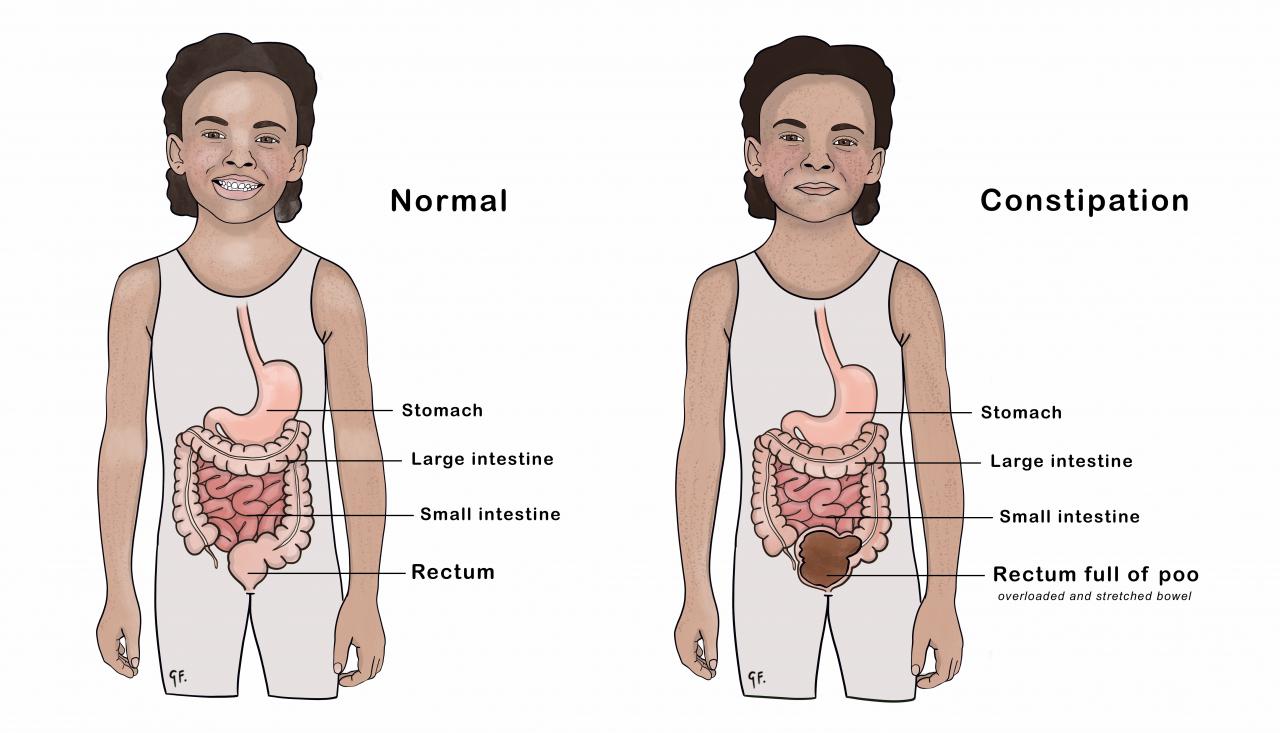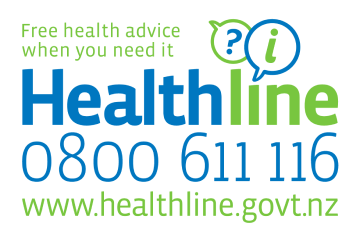Constipation Treatment
Constipation Treatment
The aim is for your child to do 1 soft formed poo every day. You can try some simple measures first for your child's constipation. If those don't work, your child will need help from laxatives.
Key points about constipation treatment
- increase your child's fluid, fibre and exercise
- encourage your child to sit on the toilet for 5 minutes twice a day
- if these don't work, your child will need laxatives
What simple measures can I try first for my child's constipation?
You might like to check the constipation page first
- increase the water your child drinks daily - give them water at each meal time and extra water when it is hot
- increase the fibre in your child's diet
- increase fruit and vegetables in your child's diet
- try giving your child 1 glass of undiluted apple juice or KiwiCrush (a kiwi fruit drink) daily - do not give juice to infants under 12 months of age
- encourage your child to sit on the toilet regularly
- for bottlefed infants, consider experimenting with various infant formulas to see if there is one that makes the poos softer and easier to do
- encourage exercise
Fruit juice (and in particular KiwiCrush), and some of the medicines used to treat constipation, are high in sugar. Make sure you or your child brushes their teeth after the juice or medicine.
How can I increase the fibre in my child's diet?
Fibre makes the poo softer and easier to do. Giving your child more fibre in their diet can help prevent constipation and also treat short-term or very mild constipation. Fibre is also important long-term for regular bowel functioning. If your child has had constipation a long time, just increasing fibre without other treatment is unlikely to fix their constipation.
To add more fibre to your child's diet, you can:
- give at least 3 servings of fruit each day - fruit with the skin on, such as apples, pears, plums, apricots, peaches and kiwifruit
- give at least 3 servings of vegetables each day
- give cereals high in fibre, such as bran cereals, Weet-Bix, whole grain cereals, porridge - avoid refined cereals and those with added sugar
- give wholemeal breads instead of white bread
- try adding bran to muffins and other baking, or add it to your child's regular cereal
- try adding 1 to 2 tablespoons of ground flax seed/linseed meal to cereals, soup or mixed into a smoothie
- give legumes (beans and peas), including baked beans, hummus, lentils
- give strained prunes to babies, up to 3 tablespoons a few days each week
It is also important to give your child plenty of water with the increase in fibre.
How can I encourage my child to sit on the toilet regularly?
Encourage your child to sit on the toilet for 5 minutes twice a day about 10 minutes after a meal (breakfast and dinner). Even if they don't do a poo, still encourage this.
- make sure your child is comfortable on the toilet
- get a stool for them to rest their feet on to make sure your child's knees are higher than their hips
- use a child's toilet seat for preschoolers - if your child is not relaxed because they're worried about falling into the toilet, this makes it difficult to have a relaxed successful poo
- encourage your child to lean forward and rest their elbows on their knees
- teach them to push their tummy out when trying to poo
- make the toilet interesting and child-friendly with books and toys
- incentive or 'star' charts can help encourage your child to sit on the toilet even if they don't always do a poo
When should I take my child to the doctor for constipation?
You should take your child to your doctor if:
- simple measures and sitting on the toilet regularly haven't worked
- your child has had constipation for a long time
- your child has tummy pain
- your child is pooing their pants (soiling)
If your child has any of the above, it usually means their constipation is more severe and they need medicine for constipation.
What are laxatives?
Laxatives are medicines that help the body to get rid of poo. They are an essential part of the treatment of long-lasting constipation and soiling. Most are available to buy at a pharmacy but it may be better to go to your family doctor first. Your doctor can give you advice about the best laxative for your child and how much to give them. Your doctor can also give you a prescription which usually means you won't have to pay for the laxative.
There are 3 ways laxatives for childhood constipation work:
- some soften the hard poo and make it easier to do (poo softeners)
- some help the bowel push the poo out (stimulants or emptiers)
- some wash the bowel out completely
How long are laxatives for constipation necessary?
For as long as it takes. Children often need laxatives for months to years rather than weeks.
Remember that the purpose of laxatives is to allow your child to develop a normal habit of pooing regularly.
Ideally, your child should aim for 1 soft formed poo that is not painful to do, every day. Laxatives are necessary until the body can manage this without help. You may need to adjust the dose over time, but it is important to continue the laxative treatment.
Often children get sick of taking medicine, or dislike the taste. Try to make the medicine taste better by putting it with milk or juice, or ask your doctor or nurse about an alternative laxative. Incentive or 'star charts' can be a good way of encouraging your child to take medicine regularly.
Are enemas and suppositories ever used for constipation in children?
These are medicines given into the bottom to help to empty the lower bowel. This can be an unpleasant experience for children, causing pain and embarrassment. They are generally avoided in children and should only be used under medical direction.
When might a bowel washout be used for constipation in children?
If your child has had constipation for a long time, your doctor may recommend emptying the bowel of poo. This is often necessary to allow the bowel to return to a normal size. It is called disimpaction - a washout of the bowel contents. A bowel washout is always just one part of your child's overall treatment - the first part. It is never a standalone treatment. In fact, if your child needs a washout, they will usually need a long course of laxatives. Eventually, they can be weaned off the laxatives and on to a high fibre diet.
A bowel washout usually involves giving a powerful laxative solution (such as sodium picosulphate or macrogol). Your child will need to drink the solution until the bowel is emptied. Because of the volumes necessary for some of these treatments, your child may need to go to hospital to have the laxative solution through a nasogastric tube.
This page last reviewed 07 March 2022.
Do you have any feedback for KidsHealth?
If you have any feedback about the KidsHealth website, or have a suggestion for new content, please get in touch with us.
Email us now
